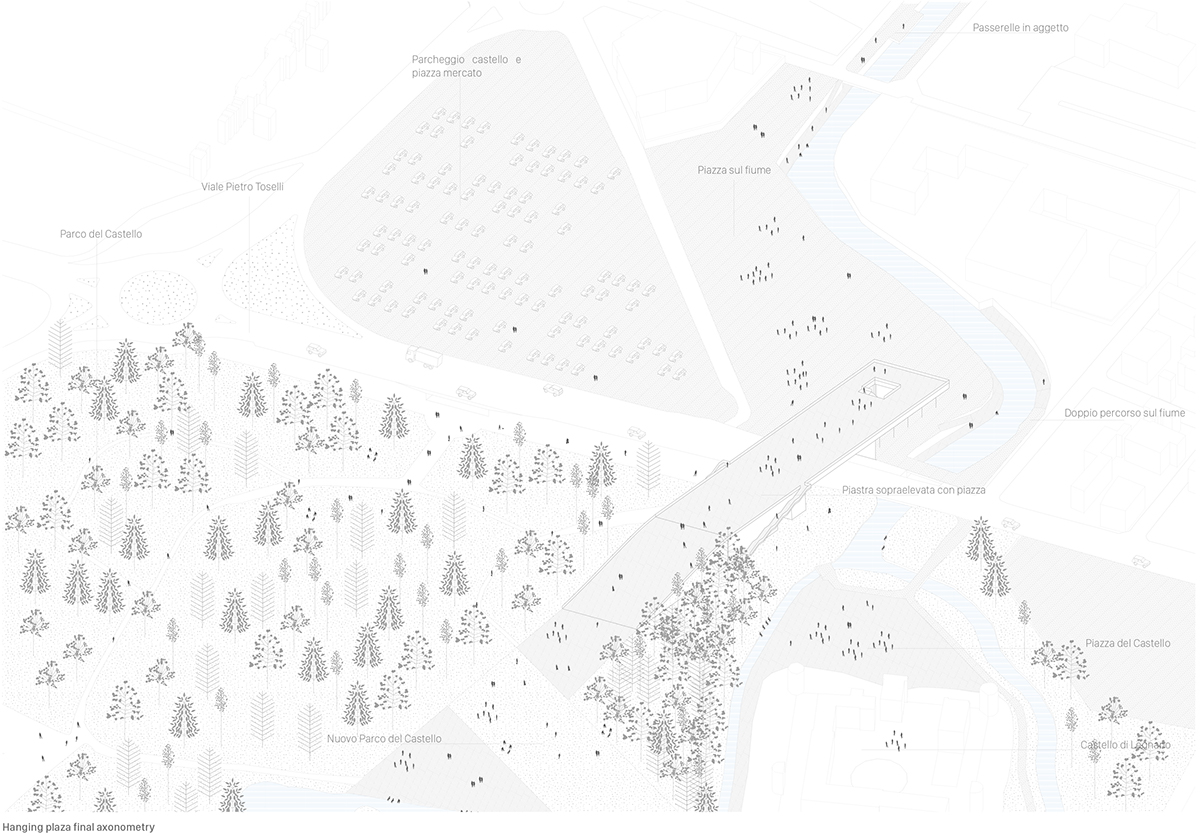Politecnico di Milano | Town Planning Design Workshop
Academic year 2015/2016
Professors | Nicola Russi, Paolo Bozzuto
Tutors | Luca Marullo, Gabriele Solazzi
Working group | M. Morandi, M. Pigni, L. Summonte
The water system in the Milan metropolitan area has always been a super infrastructure useful for moving large masses but it has never been a place to stay, it had only a functional purpose. When this feature has failed, the waters, no longer useful in Milan, were buried, hidden, and neglected. The Darsena event spotted a requirement that people had from much time: the water could also become a place to stay, a designed open space.
The project investigates the system of the Milan waters, understanding their potential and devising strategies to develop, giving rise to a series of public spaces around the water. Olona River has always been the theater of the events of all the territories of the Northern Milan and of Milan itself. Over the last 50 years these territories have seen urbanized and infrastructure expansion, industries were decommissioned, the river has become an open air drain. However Olona River is still an exceptionality around the Milan area, it is important to enhance this quality. That’s the reason why the project is set on the Olona River, in its flowing through the cities of Busto Arsizio, Castellanza and Legnano.
Along the river are summarized sections type, of similar height, but variable depth according to how that piece of city enters in connection with the Olona. Thanks to this subdivision five types are identified, different situations in single detail, but inside of which it is possible to recognize the commonalities that characterize them. From this arbitrary scheme, the sections are modeled as a function of the areas in which the project is possible, and are then analyzed in detail. Thanks to these interpretations arises the drawing of the potentiality. It highlights every space that will take part in the project or that will influence it. Black areas highlights where the project can be made as they are marked gray all those spaces where the project does not intervene directly, but with them interacts. The paper makes a system of the cross-interpretation through sections with the longitudinal potential guaranteed by the presence of the river itself, creating a new piece of big city on the river. Bu-Ca-Le is a large conurbation, an exceptional case, unique in the Milan metropolitan area. Yet this conurbation still struggles to recognize itself: parochialism and small municipal interests prevails, and, above all, the public spaces still faces a size of a small provincial town. Also there is the presence of Olona, great unexpressed potential. The conclusion is spontaneous: is it possible the creation of a new center of this conurbation, in which the three cities actually recognize themselves together? And is it possible that this center could be structured around the river Olona, strong of the numerous potentialities which are located in the places along his course?
The design approach is not aimed at the detailed design of the areas but looks rather to the formulation to design strategies. They are a set of possibilities, of viable alternatives in the project of those areas. Their degree of indeterminacy ensures flexibility contribute to their future performance. The project is therefore based of two strategies between them combinable. The first strategy is based on the division into cross sections of the surfaces that come into contact with the river and provides a method for application types. Each type of section is combined with a set of strategies applicable in all such types. The key point is the creation of new public open areas and services at the scale in the new metropolitan city. The second strategy is longitudinally applied along the banks of the river taking along the whole part of the new center. It involves the use of different modes of requalifying the river bank, as walkways along the water, small piers, terraced steps, whose main points are its complete practicability North-South and a new type of approach, more direct, with water. The combinations that can be made between the two sets of strategies are numerous and each of them leads to a different possible spatial and functional outcome of potential areas. This ensures versatility to the entire urban project, able to adapt to different situations. They are studied in particular four combinations (one for each section type) that generate the detailed project of four specific areas. These are not necessarily the best solution (but obviously the recommended), they are only one of the possible combinations mentioned above. In any case, they show how new public spaces with new functions of the new public center of Bu-Ca-Le can be created.






















